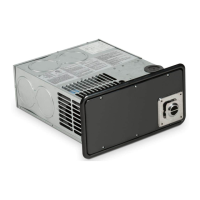15
EN
Furnaces
6. Circulating air blows against the sail switch and closes the contacts, completing the circuit. The sail switch is a
safety device that ensures airflow before ignition.
7. The limit switch is a safety device that protects the furnace from overheating. The contacts in the limit switch
open at a given temperature setting, shutting off power. This activates the open limit switch diagnostics and
the LED on the controller module flashes, shutting down the gas valve. See the Code Failure Table for code
failure information.
8. As power is applied to the circuit board, the system does the following:
a. Timing circuits allow the blower to purge the heat chamber for 15 seconds.
b. When current is supplied to the gas valve, it opens to high-burn stage. The controller module activates the
low-burn operation on the valve.
c. As the valve opens, the ignition module sends a high-voltage spark to the electrode at the burner.
d. The ignition module detects the presence of a flame.
– If the flame is not sensed aer seven seconds of sparking, a signal is sent to the controller module that
there is no ignition and the controller module shuts off the gas valve.
– Aer another 24-second purge, the ignition module will try again.
– Aer a third try, the controller will go into a so safety lockout, timing for one hour, and the diagnostic
LED will flash a code. See the Code Failure Table for code failure information.
– Aer the timed hour, the controller will initiate three more tries for ignition. If there is no ignition, the
timing sequence begins again.
– If the system does not ignite and the thermostat is still calling for a heat demand, the blower will
continue to run for approximately 90 seconds as a post purge, then shut off. When the thermostat
senses the desired room air temperature, a signal is sent to the controller module to shut down
operation of the gas valve and run the blower for 90 seconds as a post purge of heat from the furnace
heat chamber.
Two-stage operation in automatic mode, when temperature is within 1 °F of the set-point of the thermostat, starts
the furnace in low-burn mode. If the temperature is above 1 °F of the set-point of the thermostat, the furnace will
start in high-burn mode. The thermostat can also be set to manual for either high or low modes. This will not
allow the unit to switch automatically with temperature changes.
Code Failure Table
Number of Flashes Diagnostic Information
1 Low Input Voltage
2 Ignition Failure
3 Open High Limit
4 Stuck APS (Sail Switch)
5 Module Fault

